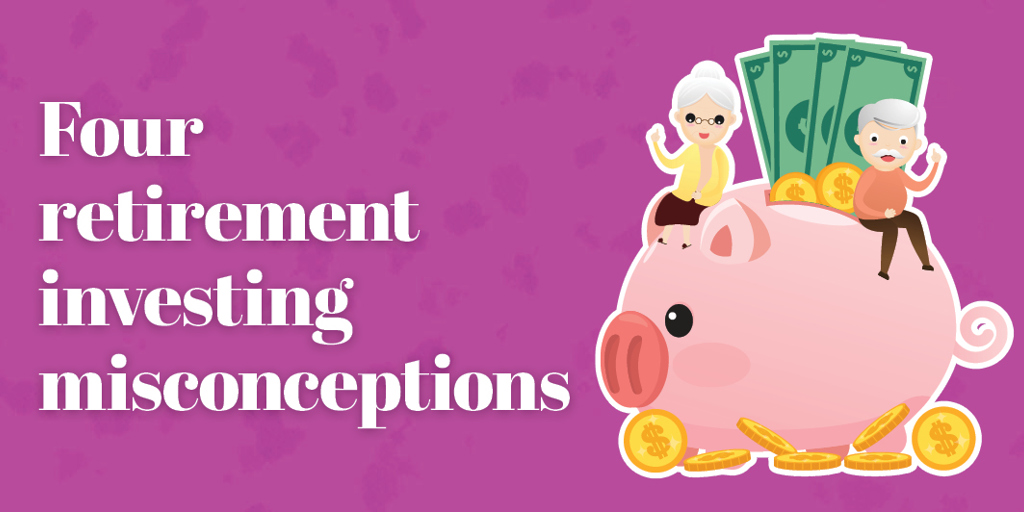


Four Common Investment Misconceptions
One of the biggest misconceptions I come across in the financial advice industry is that as you get older, you must reduce your allocation to stocks. While this philosophy might be grounded in some truth, it oversimplifies the reality. Many people unnecessarily choose an asset allocation they believe is safe but might be putting their future goals at risk.
The foundation of this argument rests with the principle of The Investment Time Horizon. The simplified thought is this: As we get older and have fewer years to live, so our time horizon must get shorter. While we all have an expiration date, our assets do not. Many of us will not use all our funds in our lifetime. As a Chief Investment Officer of a trust company, much of what I do every day is plan for asset transfer to the next generation. When it comes to investment assets, time horizon and life expectancy are not necessarily the same thing. And even when they are, many still misallocate assets based upon a faulty assessment of  risk.
risk.
Here are 4 common misconceptions and how to address them.
Age Equals Time Horizon
Time horizon should be the single-largest determinant in choosing the percentage of stocks, bonds (or CDs) and cash that make up your investment portfolio. Rather than relying on the adage “your age should equal your bond allocation,” investors should look at their likely future cashflow requirements in buckets.
- Bucket 1 – Immediate needs: Expected withdrawals that are expected to occur within the next 12 to 18 months. These assets should be invested in money market or demand deposit accounts (checking/savings) with little or no market volatility.
- Bucket 2 – Intermediate needs: Expected withdrawals in more than 2 years but in less than 8 to 10 years. College tuition, vehicles, and major home repairs are examples. The timing of these expenses is reasonably predictable. These funds should be invested in higher-yielding, time-restricted investments such as investment-grade bonds or bank CDs. The maturity date should roughly match the expected withdrawal date.
- Bucket 3 – Long-term needs: Withdrawals that are not expected within the next 8 to 10 years. These funds should be invested in stocks and other risk-based assets. Investment real estate and other alternative assets could fall into this category. These assets have higher expected returns, but they come with more short term volatility.
The Stock Market Is Very Risky
When we speak of risk in financial terms, we are generally referring to volatility or the amount an investment can gain or lose value. From quarter to quarter or year to year, stock values can rise and fall dramatically. However, if we look at returns over longer holding periods – like 5 and 10 years – the volatility drops dramatically. This happens because stocks historically tend to sell off dramatically, recover over time, and eventually make new highs before the cycle repeats itself. Historically, these cycles take 7 to 10 years to fully play out.
- Diversification is important here, because a share of stock is a small piece of ownership in a company. Some companies never recover, and the stock price reflects that; but as an economy recovers, the market not only participates, it usually leads the way.
- Long-term returns on stocks are nearly double that of bonds. According to the NYU Stern Database, the S&P 500 stock index has an average annualized return of roughly 10% (9.98%), dating to when the index was just 90 stocks in 1928. U.S. Treasury Bonds have returned just under 5% (4.84%) during the same period.
Government Bonds Are Less Risky Than Stocks
Unlike stock returns, bond returns are constrained by mathematics. A bond is simply a $1,000 piece of a much larger loan. Once the loan has been created, the terms of the loan don’t change. The “total return” of a bond comes from the interest paid (the coupon payment), plus or minus any change in price. A bond’s price will change as prevailing interest rates change. As rates fall, the bond becomes more valuable because it must pay a higher coupon than the prevailing market interest rate. Therefore, as prevailing interest rates fall, existing bonds become more valuable; as rates rise, existing bonds lose value.
- Bonds cannot repeat their historical performance. Over the last 50 years, bonds have enjoyed a sustained period of systemic falling interest rates. The interest on a U.S. Treasury bill fell from 16.3% in May 1981 to 0.03% in December 2008. During that time, U.S. Treasury bonds returned an annualized return of 9.77%. Most of this return can be attributed to steadily falling market interest rates.
- With current market interest rates at zero, historical returns are no longer relevant to future return expectations – if we assume rates cannot fall much below zero (see Germany and Japan). This means that as the Fed raises rates to fight inflation, existing bond prices will fall, handicapping future bond returns and virtually guaranteeing they will struggle to keep up with inflation.
You Can’t Lose Money in Cash
With the rise of cryptocurrency and alternative assets, we are having to rethink our definition of money. Technically, money is simply a store of our labor’s value. It’s taken many forms throughout history – coins, shells, notes of paper, entries on a ledger – but its purpose has always remained the same. We earn it when we work and keep it stored until we wish to exchange it for something of value in the future.
- If our money’s unit of storage decreases in value, it is going to take more units to purchase the goods we want in the future. This is inflation. In 2021, the Consumer Price Index increased 7%. That means the work we did in early January buys 7% fewer goods by the end of the year. If we assume a 250-day work year, that means we lost 17.5 days of work to inflation. Holding cash can – and does – result in a loss of money.
Decisions, decisions …
Armed with this knowledge about important misconceptions, what decisions should investors be making? Here are three suggestions:
- Invest for your needs not for your age.
- Carefully consider your expected expenses and utilize the “bucket” methodology. This should be the foundation of the allocation decision.
- Resist changing your allocations based upon market conditions. Market timing is incredibly difficult because it requires two perfectly timed decisions – when to get out and when to get back in. Emotions generally push us to make the wrong decision on both occasions.
Warren Hurt is Chief Investment Officer for F&M Trust.
Recent Articles
Join our e-newsletter
Sign up for our e-newsletter to get new content each month.






















